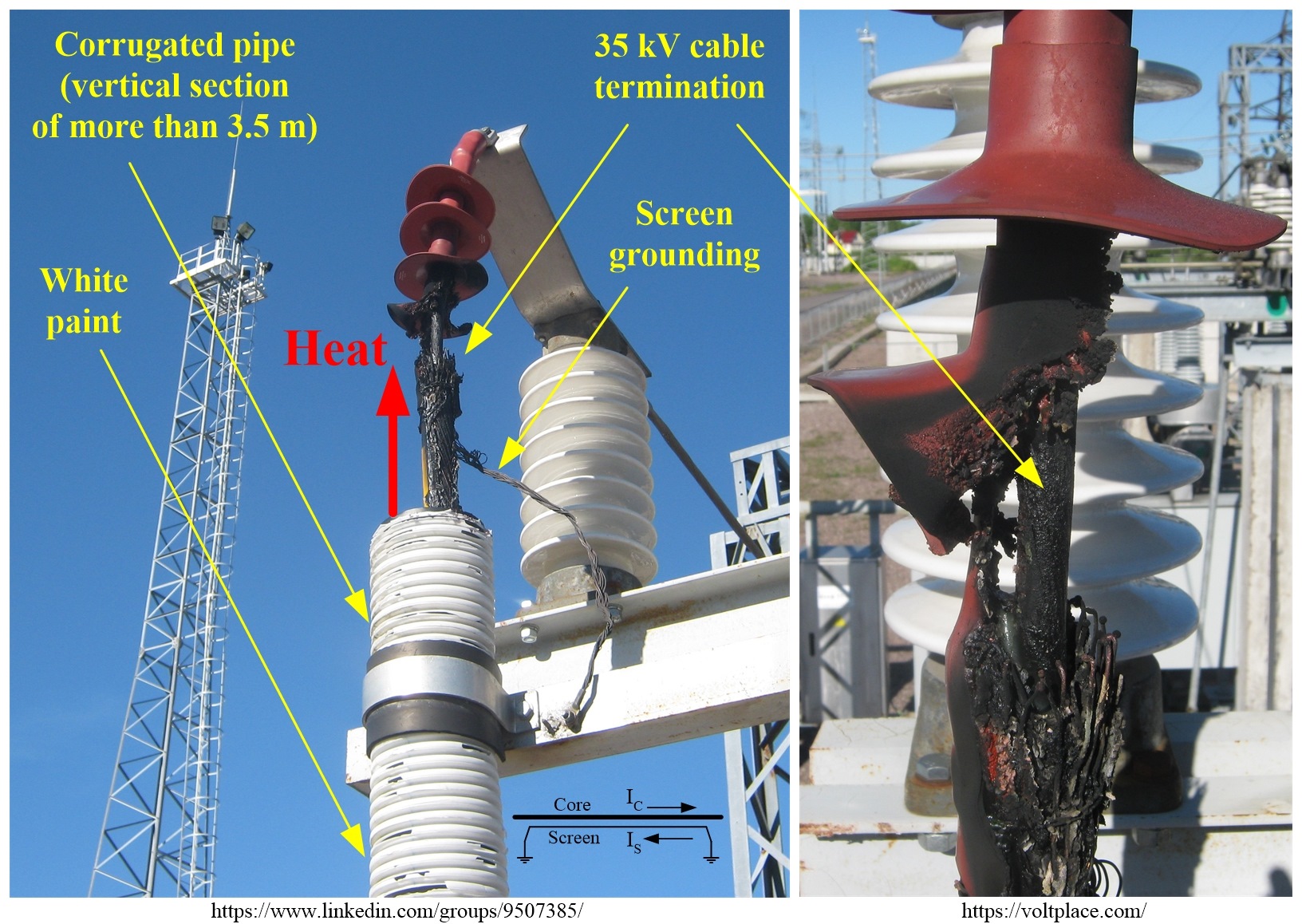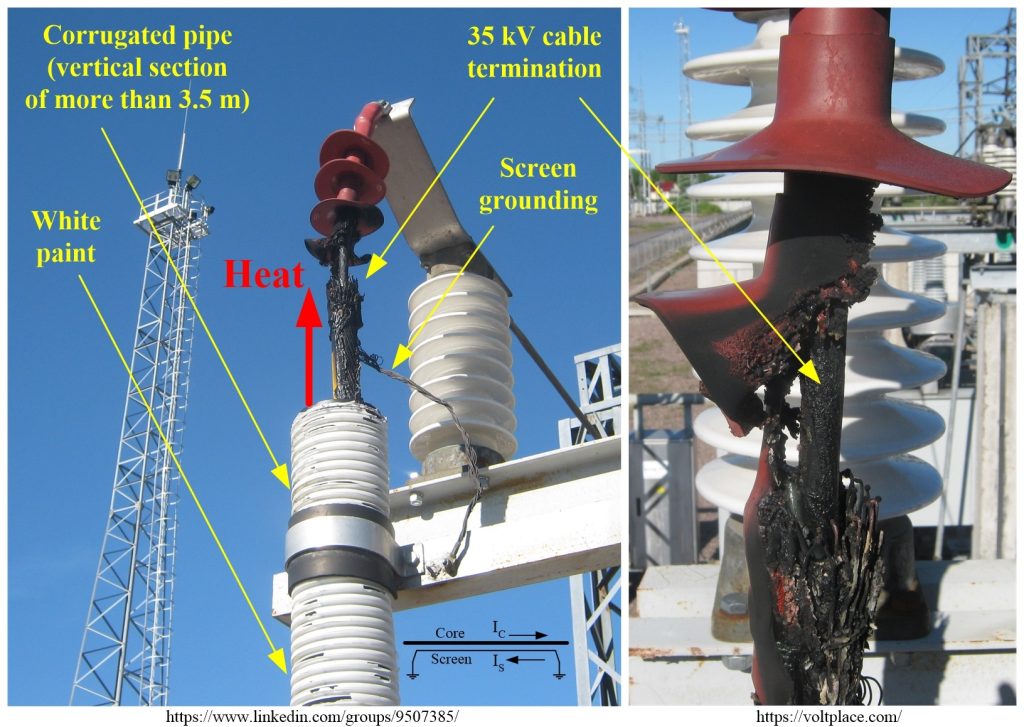
Long vertical cable pipe = good heater
Cable terminations are a weak element of the cable line, since:
✅they have a complex structure;
✅they are mounted manually (and the quality of installation depends on the qualification of the installer and his mood);
✅they are subject to various external influences (sun, wind, rain, snow, ice etc).
When a cable termination is damaged, it is not always obvious why exactly this happened and how to prevent new damage. There are a lot of cases of damage to terminations in the World, and everywhere there are different reasons, but I would like to focus on the case shown in the photo.

The photo shows a 35 kV cable termination mounted on a single-core cable with cross-linked polyethylene insulation (XLPE). Of course, this termination could have been damaged because it was poorly mounted, but it is not always easy to prove. But it is easier to pay attention to some clearly noticeable features of this case.
1️⃣ Not only cable lines, but also overhead lines were connected to the 35 kV buses of the switchgear (unfortunately, it couldn’t be seen from the photo). At the same time, there were no 35 kV surge arresters near cable terminations. Therefore, termination could accumulate defects associated with overvoltages caused by lightning discharges to overhead lines.
2️⃣ The copper screens of the cable line had a simple grounding on both sides, while the phases A,B,C were laid at a great distance from each other. This led to the appearance of significant screen (S) currents (Is) induced by magnetic field of the core (C) current (Ic). As a result, screens and cores together overheated cables and, in particular, the place where the screen was removed from the termination to the outside in the direction of grounding.
3️⃣ The main thing. The termination was installed at a height of about 4 meters above the ground. Throughout the entire section from the termination to the ground, the cables were placed in a corrugated pipe (so that solar radiation would not damage the pipe, it was manually painted outside with white paint). The heat that was released in the cable (due to core and screen power losses) on the vertical section of the corrugated pipe rose up along the pipe and additionally heated the termination from below. Since the vertical section is long (3.5-4 meters), there was a lot of heat rising up. Thus, the vertical section behaved like a heat gun, heating the termination, which was installed right at the pipe end.
I believe that in practice it is necessary:
✅to limit the length of vertical sections of the pipe so that such pipes do not turn into heat guns;
✅not to put the cable termination directly above the pipe end, as was done in the considered case.
However, I do not think that items 1-2-3 were the only and/or main reasons of damage to the cable termination. Investigating the true causes of damage is a difficult task, and, in many cases, there is not enough knowledge and time to complete it.
